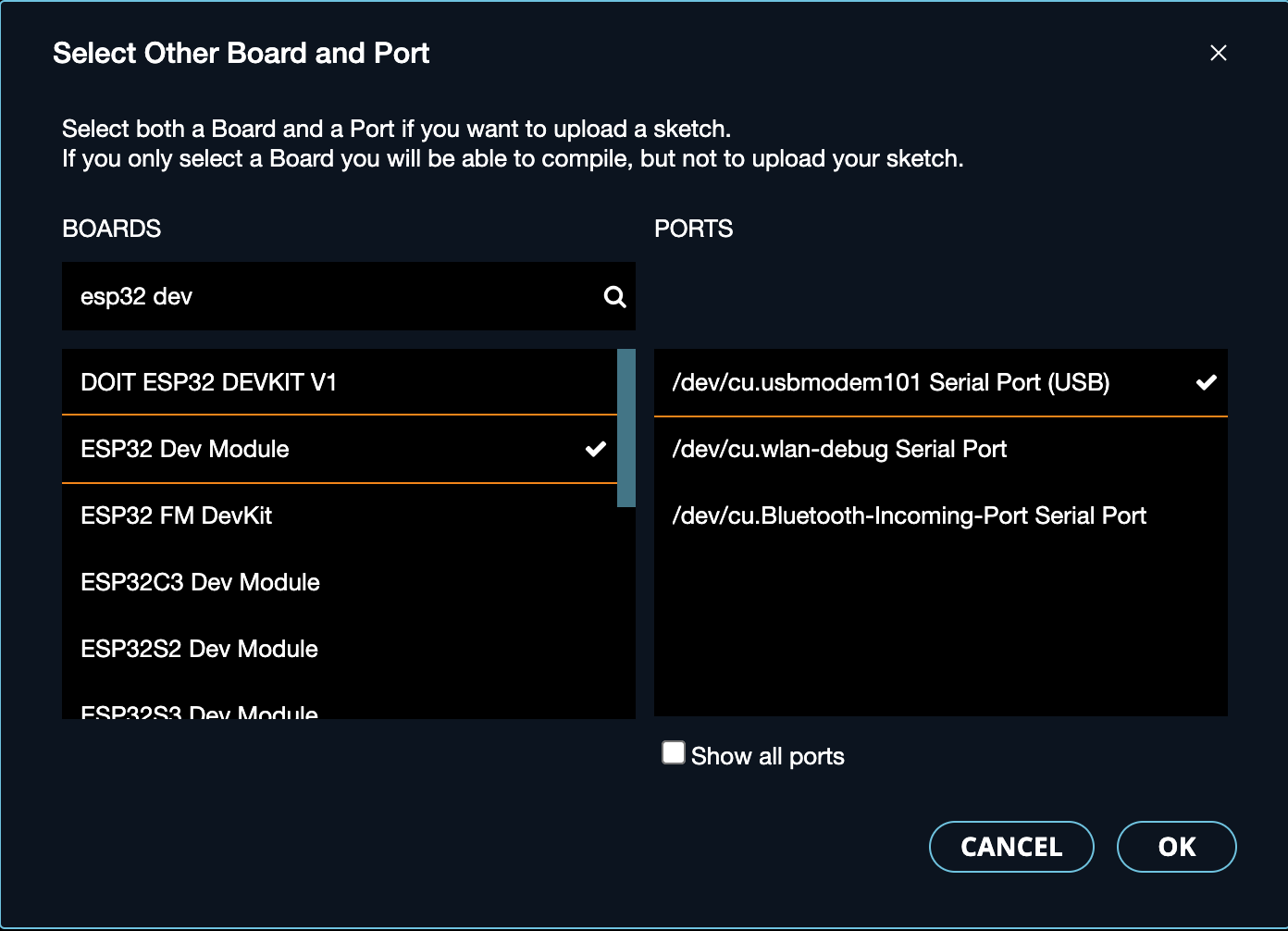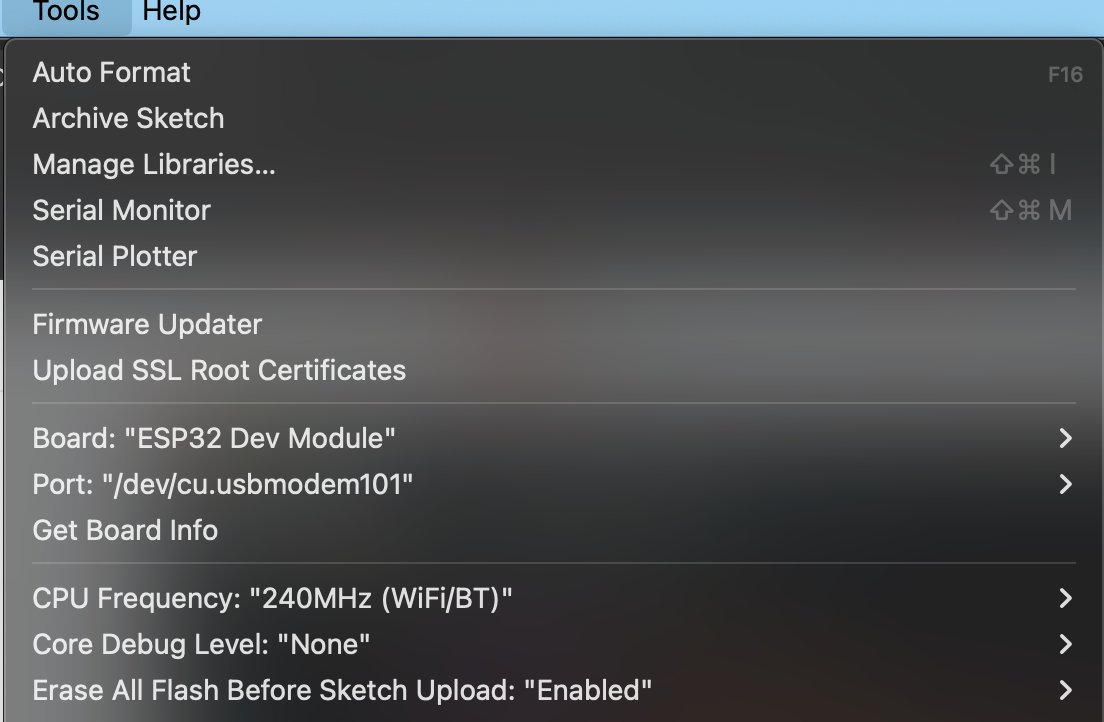@brekel
Yes.
The screen is held down with spongy two sided tape and the ribbon cable plugs into a connector on the board.
You might soften the the tape with rubbing alcohol.
They are very fragile.
teastain2
@teastain2
Retired Industrial Robotics Interface Designer
Best posts made by teastain2
-
RE: Display removal, T-Display-S3posted in Product information
-
RE: T-watch s3 2020 codes ?posted in Build environment
@eliott I'm not sure about this product.
Are you asking for the exact firmware that shipped with your watch when new?
Here is a link to example sketches at the LilyGO repository:
https://github.com/Xinyuan-LilyGO/TTGO_TWatch_Library/tree/master/examples
To be sure, you may raise and "Issue" on this site, which may take a long time.
I have found that a nice inquiry at their office address works:
sales@lilygo.cc
Also LilyGO suggest this GitHub repository:
https://github.com/sharandac/My-TTGO-Watch
Hope this helps!
-Terry -
RE: T-Beam SUPREME - Charging battery when offposted in Technical Discussion
@luffe LilyGO products...generally yes, they charge all the time while plugged in to USB.
You should conduct a simple test with your actual unit, as the documentation is very sparse.
(I could not find a schematic for your board)
-Terry -
RE: Unable to make T-Display S3 work with LiPo batteryposted in Common problems
Sounds like the ol' GPIO 15 must be turned on HIGH issue.
This enables the display power and the circuit that uses and re-charges the battery.
I made a support repository for new users here:
https://github.com/teastainGit/LilyGO-T-display-S3-setup-and-examples
My examples are the simplest possible sketches that use the display, TFT_eSPI and Serial.print functions, as a sort of tutorial.
Hope this helps -TerryIf you are not running one of my sketches, you should add:
#define PIN_POWER_ON 15 // LCD and battery Power Enable
#define PIN_LCD_BL 38 // BackLight enable pin (see Dimming.txt)just before the setup and then in setup add:
pinMode(PIN_POWER_ON, OUTPUT); //triggers the LCD backlight
pinMode(PIN_LCD_BL, OUTPUT); // BackLight enable pindigitalWrite(PIN_POWER_ON, HIGH);
digitalWrite(PIN_LCD_BL, HIGH); -
RE: CAN Transceiver Supportposted in Product information
@luki743 said in CAN Transceiver Support:
T-Embed
Yes. ESP32 supports CAN and these are featured S3 boards.
-
RE: Boot-Problem: LilyGO TTGO-S3 Touchposted in Common problems
HotHead here!
So, the HotHead sketch works on battery, yes?
Could you post your temperature code here so I could run it on my LilyGO T-Display S3 ?
-Terry -
RE: How to operate T-Display-S3 Touch out of the boxposted in Product information
@danardi It is indeed annoying and it gave me trouble, but I figured out that you can edit the pinconfig.h that appears in the Arduino IDE off to the right with your own SSID and Password and avoid the ESPTouch nonsense. (this 'ESP touch" has nothing to do with the optional touch screen, BTW)
If you are new to LilyGO T-Display S3 I made a support GitHub repository here:
https://github.com/teastainGit/LilyGO-T-display-S3-setup-and-examples
-Terry -
RE: JST-GH connector on T-Camera S3 ?posted in Technical Discussion
@jip The recommended battery is this:
Panasonic Lithium Ion 18650 3.7V, 3400Mah
You can put 5V into the two prong battery plug and the regulator will bring it down to 3.3.
The unit will still work, somewhat @ 3v. -
RE: T-Display-S3 (touch version) trouble to connect SD card reader (SPI)posted in Common problems
@llsummer What problem are you having?
What exact board do you have?
Latest posts made by teastain2
-
RE: about the power supply for T-Display S3?posted in Product information
@llsummer Not the 5v pin or the 3.3v pin on the side of the board.
Only power with USB or through the battery charging 2 pin connector.
Period. -
RE: about the power supply for T-Display S3?posted in Product information
@llsummer Sure thing as long as supply power to the board is from the USB,
or
from the battery charger 2 pin connector. (both can be supplying the board or just one)
but
You cannot power the board from the 5v pin or 3.3v pin. They are out-going only. -
RE: about the power supply for T-Display S3?posted in Product information
@llsummer
It is designed for a 18650 battery Lithium Ion battery 3.7 volts.Anything else is a fire risk, at your risk.
It is designed to recharge the battery from USB.
-
RE: TTGO Lora32 oled Flash bootposted in Common problems
@biker32 Whew, there is a bewildering number of LilyGO TTGO LoRa boards and naming/numbering conventions and all I can see is that your board is not very alike to the RandomNerdTutorials board and the OLED pins are different, for example.
I have run out of ideas, so all I can suggest is check all pins defined in your sketch, against the image of the board pinout you provided.
Also the hard way to troubleshoot is to comment out the LoRa stuff until it compiles and then slowly add features until it crashes. (Gonna be a long night)
oof. I just thought...what 'ESP32 by Espressif' board def are you using? The newer ones break LilyGO products. Try v2.0.15
-
RE: TTGO Lora32 oled Flash bootposted in Common problems
@biker32 Well, at least you have recovered your board!
RandomNerdTutorials are great!
There are a plethora of LilyGO LoRa boards, which one exactly do you have?
-Terry -
RE: T4 S3 AMOLED - Touch Sensitivity/Debounce example?posted in Technical Discussion
@rusty6285 Just to be clear, does your device resister a 'touch' without you touching it?
Are you programming in Arduino IDE v2.x.x. ?
Usually only interrupts and counters need de-bouncing.
There are lots of Arduino IDE tutorials and even whole libraries dedicated to this subject.
I only use de-bounce with interrupts with a custom routine that I developed just for that situation.
Let me know what is you use-case and I will try to help. -
RE: TTGO Lora32 oled Flash bootposted in Common problems
@biker32 OK, Great!
As you may know...your ESP32 is crashing, so there is a faulty sketch inside!
On Arduino IDE select Select Other Board and Port
to see if the device is connecting at all.
Put the board into upload mode by:
- Hold Boot button, press and release reset button
or - Unplug USB hold down the Boot button, plug in USB and release Boot
In the Tools menu select

Erase All Flash Before Sketch Upload: "Enabled"
to clear out the bad sketch.If the USB shows connected, upload this basic generic Serial Monitor sketch for testing.
//words preceded by "//"" are comments and are not executed bool ticktock; //declare ticktock as a boolean flag void setup() { //runs once on start up Serial.begin(115200); //open the serial port for USB cable delay(500); } void loop() { //runs in circles! ticktock = !ticktock; //every pass through reverse the flag if (ticktock) { //test current value of the ticktock flag Serial.println("tick"); } else { //prints one or the other to the USB port Serial.println("tock"); } delay(1000); //wait for a second and run again! }To re-start the test sketch unplug the USB and plug back in.
Try this!
-Terry - Hold Boot button, press and release reset button
-
RE: TTGO Lora32 oled Flash bootposted in Common problems
@biker32 Do you program with Arduino IDE ?
If so, I can help.